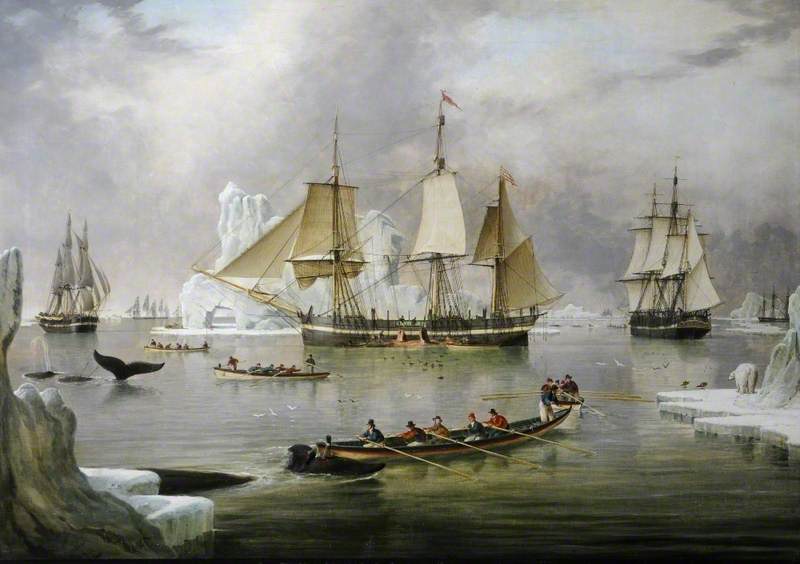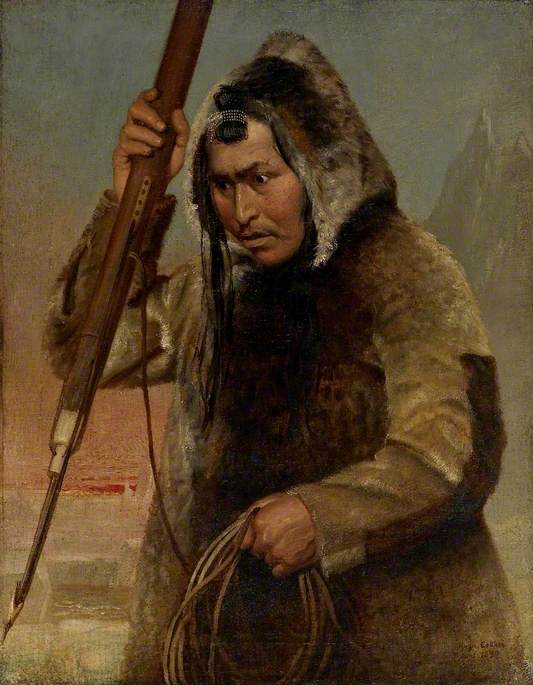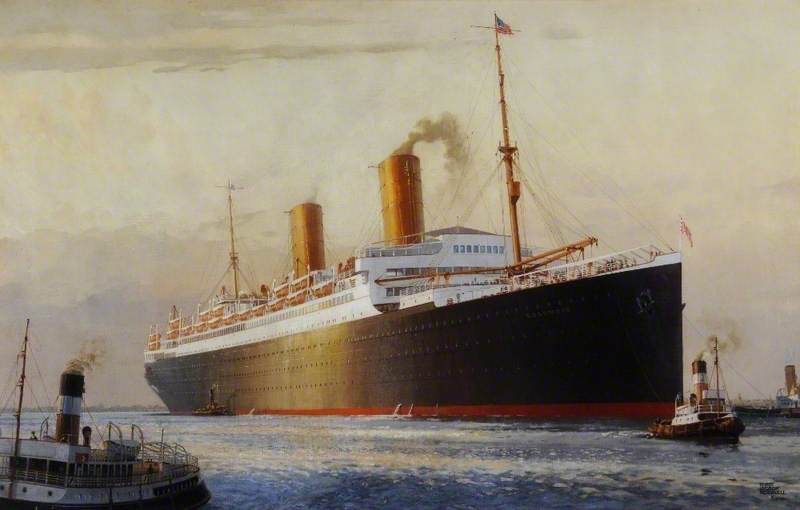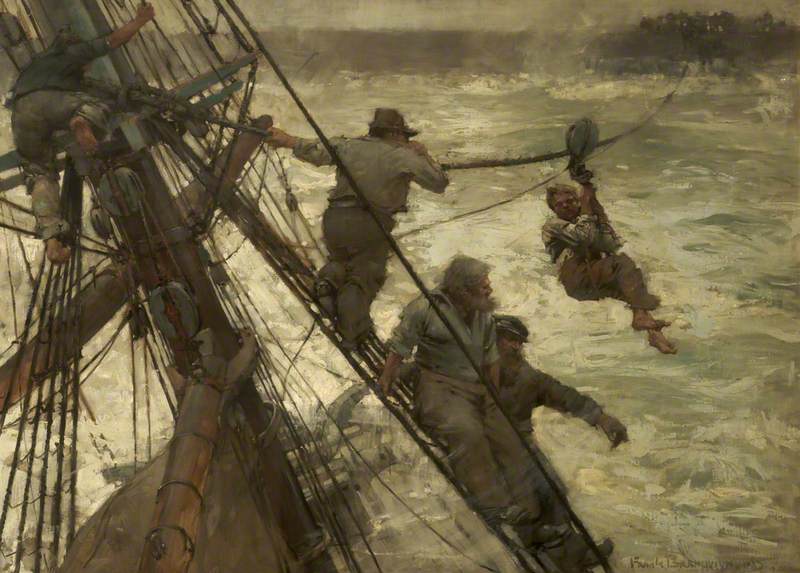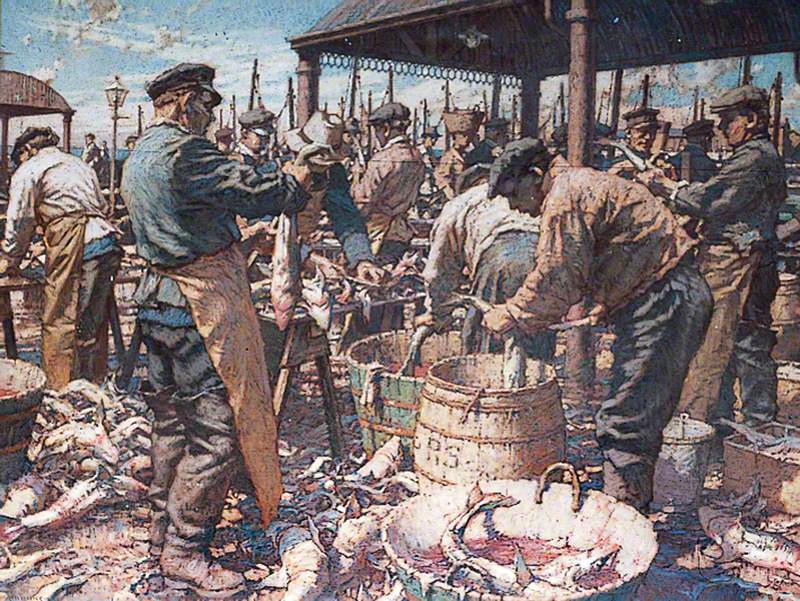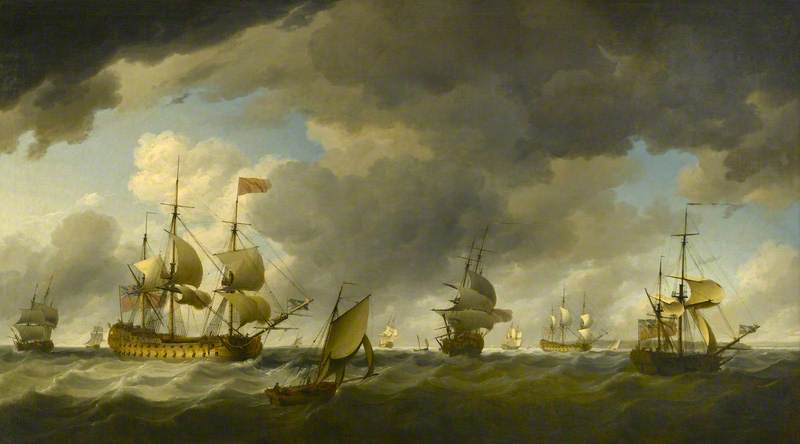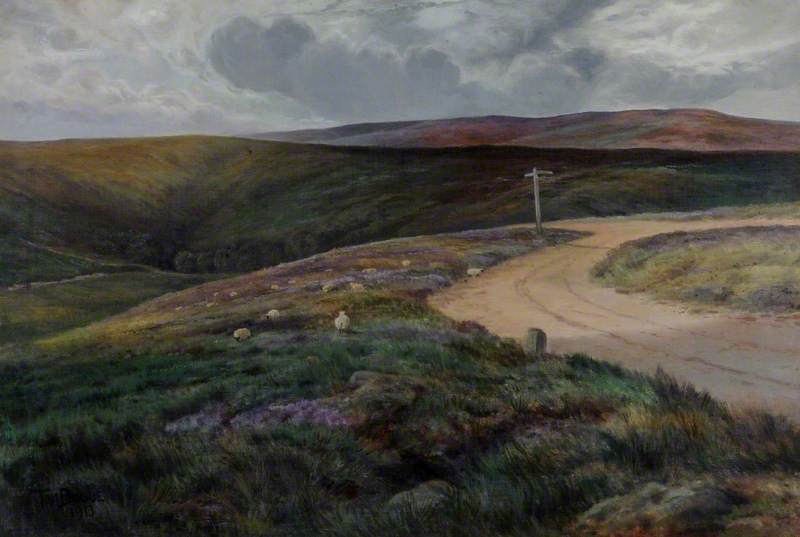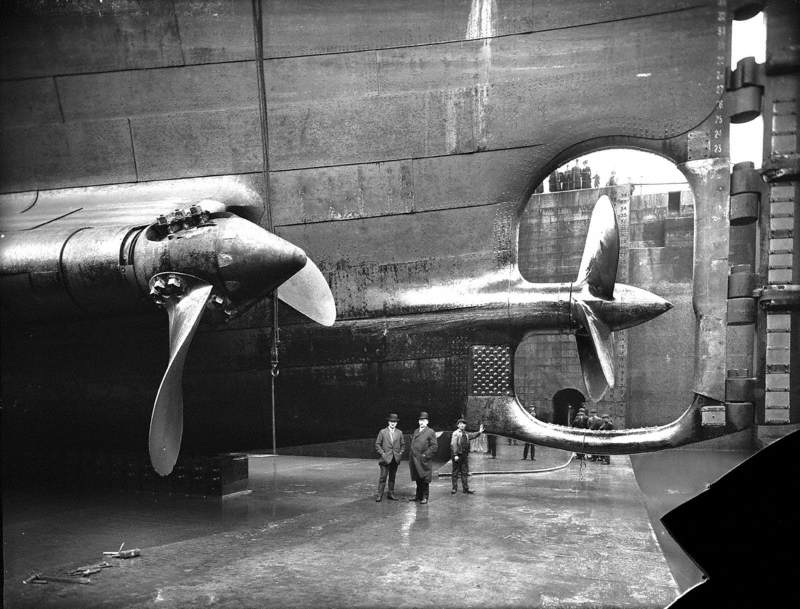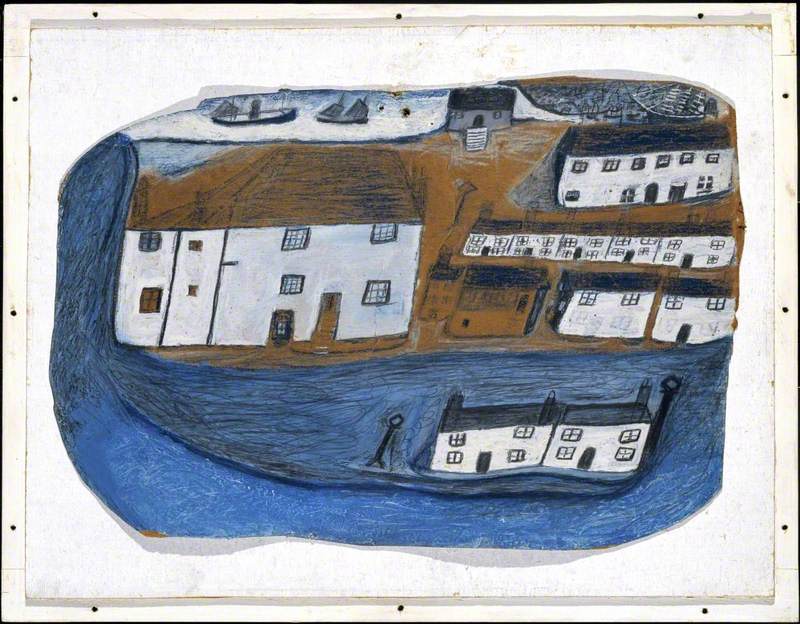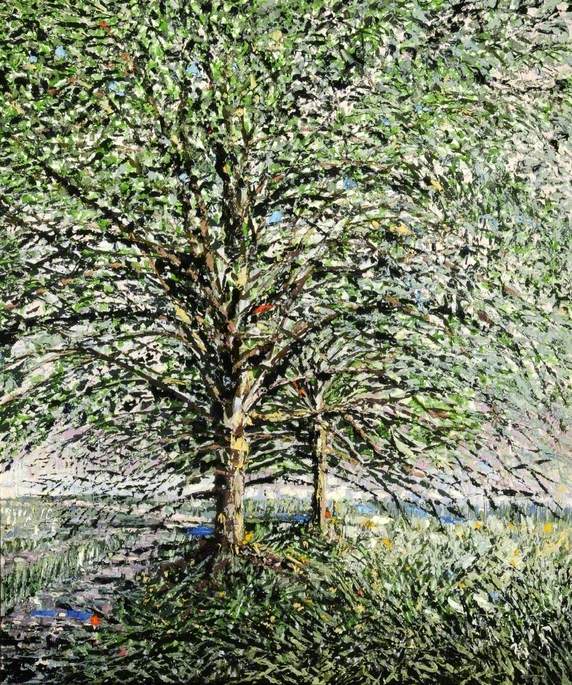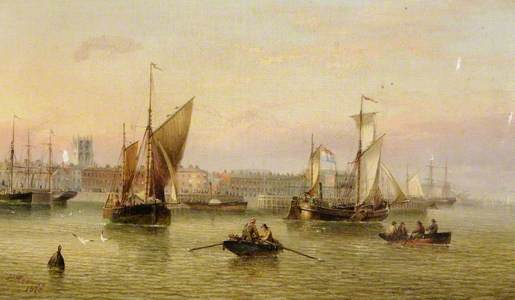Hull Maritime Museum is housed in a magnificent Grade II* listed building which was originally home to the Hull Dock Company. The company managed the City's port operations, and ships continued to use the nearby Prince's Dock up to the late 1960s. During one of my visits to the gallery, I saw an old newspaper clipping of a ship anchored outside the Museum – from 1974. Subsequently, The Old Dock and the Prince's Dock were filled in and became gardens and a shopping centre.
The Museum is packed with artefacts, including a 40-foot North Atlantic right whale skeleton and a full-sized polar bear, therefore finding a suitable place to set up the photography equipment wasn't easy. We finally chose an underground storage area in the bowels of the building where we worked alongside a collection of whalebones stacked in a corner.
By the end of our first day we had photographed 61 paintings and almost all were of whaling ships and whaling scenes. We knew then that this was not going to be like any other photography shoot as we had over 300 paintings to photograph on a similar subject.
At first we were surprised that artists went along on these whaling expeditions, but we shouldn't have been – the adventure and the scenery must have been quite a draw. Renowned marine artists John Ward and Henry Redmore are well represented in the collection. The paintings themselves depict the history of a city built on the whaling and fishing industries, which Hull dominated for over a century.
During the photography I decided to reread Herman Melville's Moby Dick, and the combination of the book at night and the pictures during the day has left a dramatic and lasting impression.
Hull Maritime Museum's collections are recognised internationally for their importance and as such have been awarded Designated status by the Museums, Libraries and Archives Council (MLA).
Hazel Buchan Cameron, Former Art UK Paintings Project Coordinator
